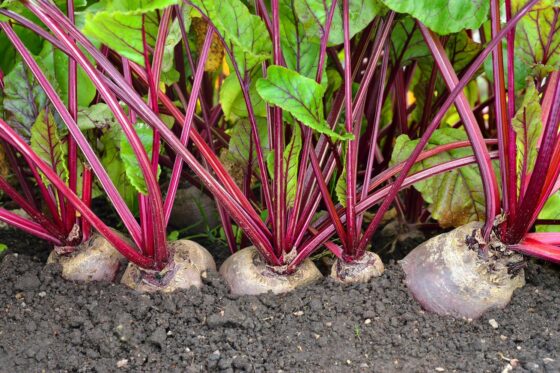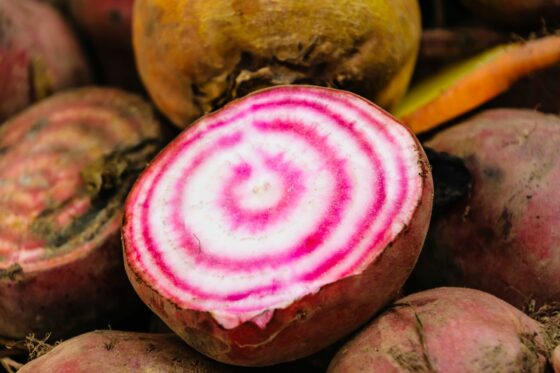Yellow beetroot: varieties, cultivation & care
Yellow beetroot tastes milder and sweeter than its red relative. We show how you can easily grow, harvest and use yellow beets in the garden.
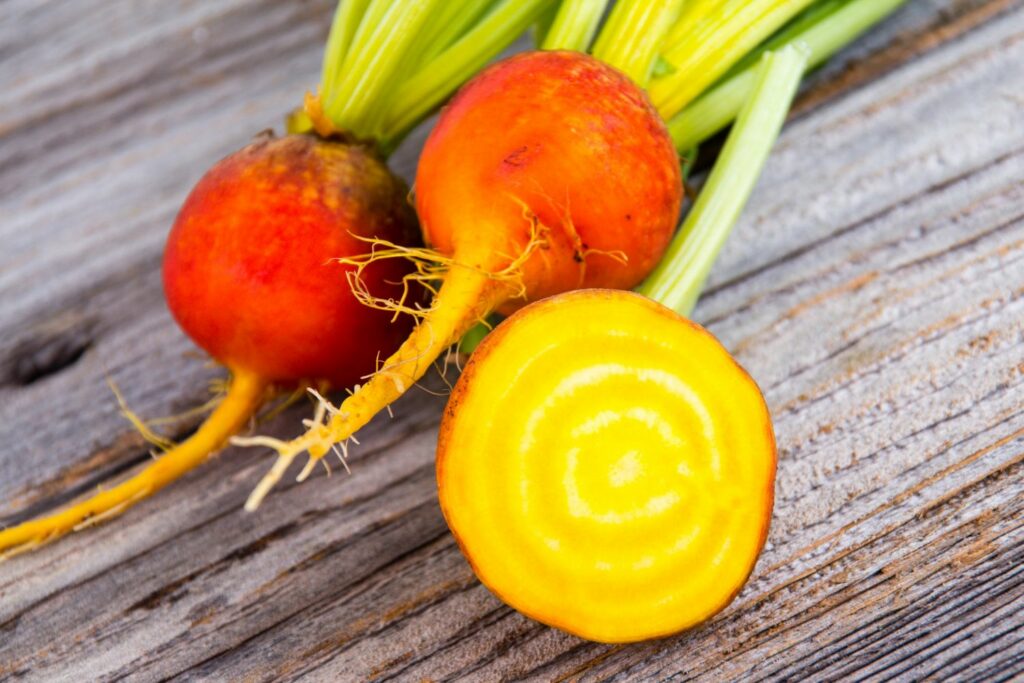
For many, traditional beet belongs on the table in autumn. A colourful accent to this is set by its sister, the yellow beetroot. Find out in this article how it differs from red beet, and how to grow and use it in your own garden.
Contents
Yellow beetroot: profile and properties
The yellow beetroot (Beta vulgaris subsp. vulgaris) has many names. It is also known as “golden beets”. From a botanical point of view, yellow beetroot is a variant of regular beetroot; like other cultivated beets, it is a foxtail plant (Amaranthaceae). However, it is also often assigned to the goosefoot family (Chenopodiaceae).
Originally, the yellow beetroot comes from the Mediterranean region, probably from North Africa. The Romans spread it from there throughout the Roman Empire 2000 years ago. The intense colours of today’s varieties, both yellow, red and white beets, come from breeding. They are very different to the wild form, wild beetroot.
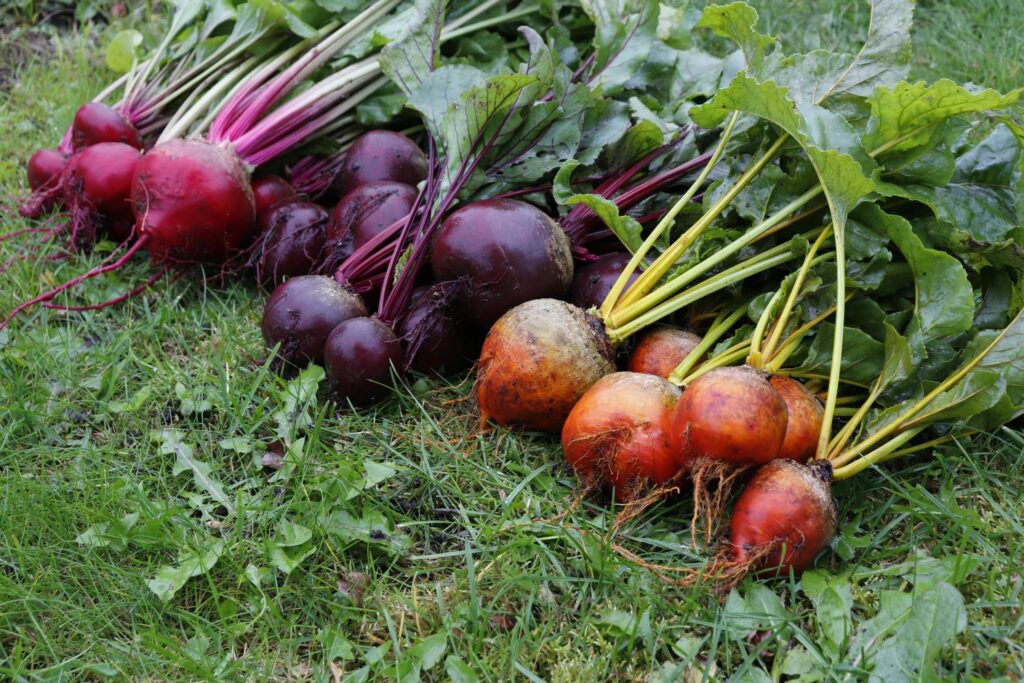
There are many similarities between red beets and yellow beets, but also a few differences. Aside from the distinct difference in colour, yellow beetroot usually tastes much sweeter than the red. In addition, yellow beetroot does not “bleed” during processing. The beets can form a round, circular or long, cylindrical shape. Their skin is very thin but the flesh is juicy and crunchy.
The leaves of the yellow beetroot are elongated, oval and form a 15 to 30 cm-long leaf blade. They are arranged in rosettes and grow directly from the vegetable. The juicy green resembles the red beets, but the leaves of the yellow variety are streaked with yellow veins. The edges usually curl with age. It is a biennial herbaceous plant, which develops the beets and leaf rosette in the first year, and in the second year an inflorescence about 1.5 metres tall. The five-petaled flowers are hermaphroditic and are pollinated by the wind.
Since beetroot is formed directly at the root neck by the shoot and the plant root together, it grows mostly outside the soil. A deep taproot is formed to supply water and nutrients; there are hardly any lateral roots.
Yellow beetroot varieties
The most popular varieties of yellow beets:
- ‘Burpees Golden’: intense orange skin, light yellow flesh; very productive and fast-growing; good to use raw or in smoothies, but also for cooking, baking or frying; fruity mild flavour, quite sweet.
- ‘Boldor F1’: orange skin, golden-yellow flesh; high-yielding; large beets contain a lot of sugar, therefore particularly suitable for baking, young leaves are good for adding to salads; particularly sweet taste.
- ‘Golden Eye’: bright orange skin, golden-yellow flesh; beets become very uniformly round; good for fresh eating or canning; mildly sweet, earthy flavour.
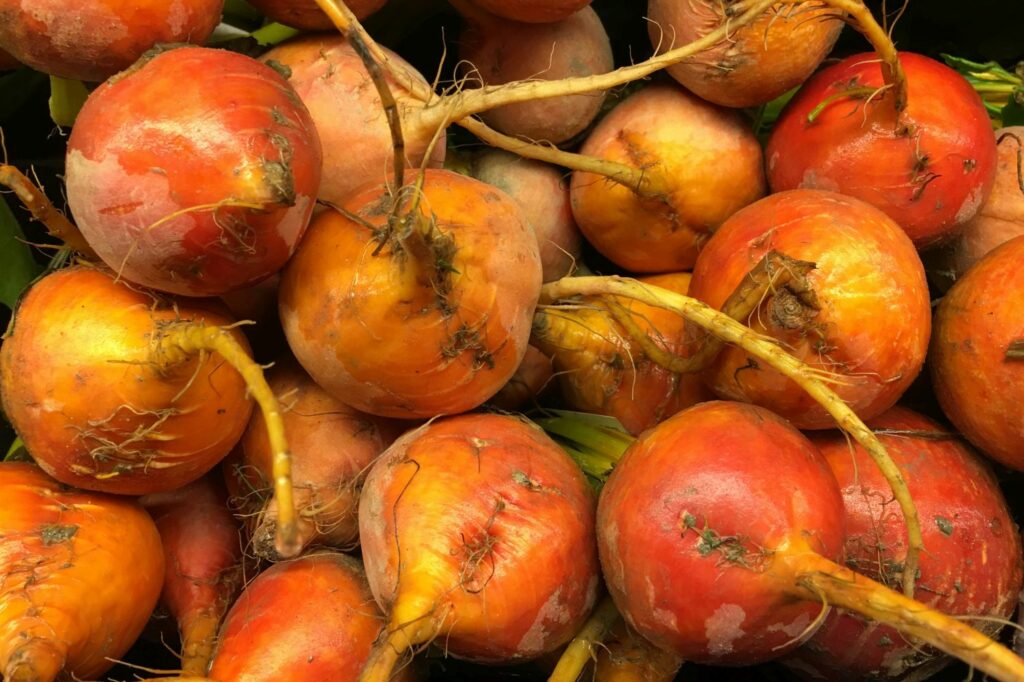
Growing yellow beets
The vegetable is a fairly undemanding plant. Its location should be deep, as it develops taproots. Only heavy soils prove to be not well suited for the cultivation of yellow beetroot, as the formation of the beets is limited. Full sun is advantageous for good growth, but semi-shaded places are also tolerated. During vegetation, a steady, good water supply is important. Locations with an excessively high pH may be deficient in boron or manganese. A boron deficiency can be recognised by crippled, heart-shaped leaves, while a manganese deficiency is manifested by poor growth and necrosis. However, you can prevent such deficiency symptoms by not liming immediately before planting yellow beetroot.
Yellow beetroot is ideal for growing mixed crops. However, the other plants should not grow too tall so as not to deprive the low-growing yellow beet of light. Chives (Allium schoenoprasum), kohlrabi (Brassica oleracea var. gongylodes) and radish (Raphanus sativus var. sativus), for example, are very suitable. For crop rotation in the garden, it is important that no other goosefoot or foxtail crops were previously grown on the plot, otherwise disease transmission may occur. The goosefoot or foxtail family includes other beet varieties such as spinach (Spinacia oleracea) and sugar beet (Beta vulgaris var. altissima).
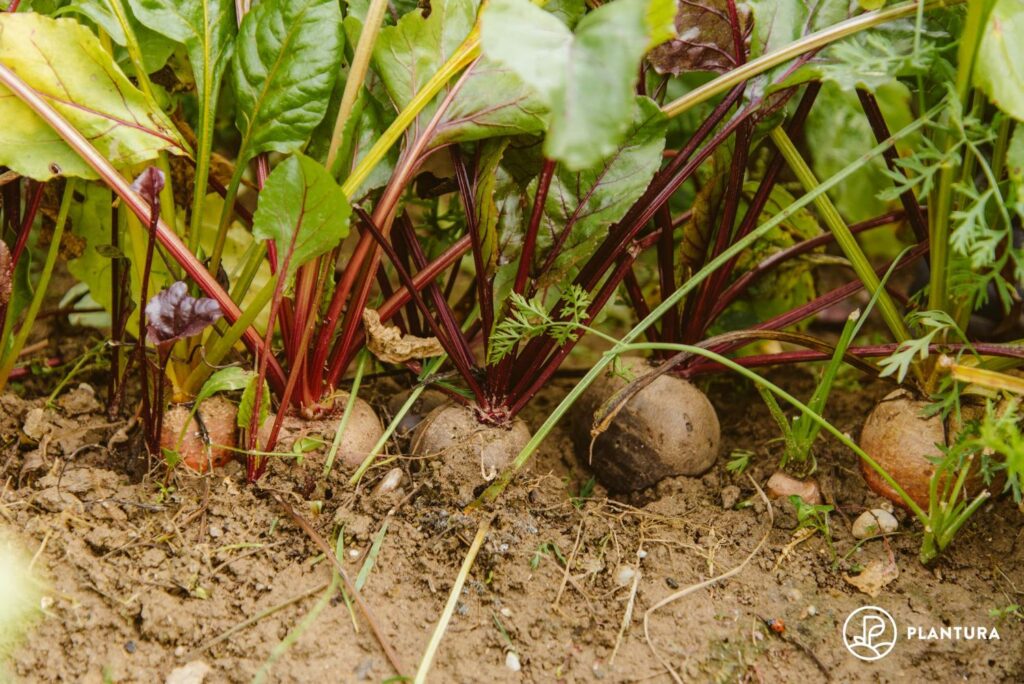
Since increased shooting can occur at temperatures below 7 °C, i.e. the plant breaks off the thick growth of the beet early and begins to flower, yellow beetroot should be sown only from mid-April to about mid-July. The germination of the yellow beet seeds begins only at about 7 to 9 °C. In the event of individual night frosts, a fleece can be used for protection. Harvesting is possible three to four months after sowing, depending on the variety.
Sowing is done directly into the bed. To do this, sow the seeds at a distance of 15 to 25 cm between each plant and with a distance of 10 cm between the rows, then cover them with soil about one to two finger widths. If you want to harvest earlier, you can pre-sprout the yellow beet seeds from March and plant the young plants into the bed from mid-April. For pre-culture, a low-nutrient growing medium such as our Plantura Organic Herb & Seedling Compost is suitable, as it promotes the growth of a healthy and dense root system. All nutrients important for the young plant are included in just the right amount and ensure optimal development. Seedlings can be planted in May with slightly wider plant spacing, with about 20 to 30 cm between plants and 10 cm between rows.
Tip: The seeds are naturally in a so-called tangle with four seeds combined in each case. This is also the case when you buy the seed. The exception is the slightly more expensive seed tapes where the seeds are already isolated. If yellow beetroot is sown in a ball, it must be separated later otherwise it will be too crowded for the individual beets.
Caring for yellow beetroot
If the seeds have sprouted and are too close together, they may need to be thinned out. This ensures that each beet gets enough space to grow. During growth, regular watering of the beet is enough. For uniform growth, the soil should be constantly moist, but waterlogging should be avoided. Fertilisation of yellow beetroot is possible on lean sites, but should be done only in moderation.
With yellow beets, this must be considered in relation to nitrate:
- Leafy and turnip vegetables such as yellow and red beetroot, as well as lettuce and spinach, accumulate nitrate, a form of nitrogen, in their leaves.
- Excessive nitrate intake is suspected of being harmful to health. Therefore, the vegetables should be consumed only in moderation.
- Infants are more at risk because their stomachs are not yet fully developed. Therefore, you should not eat too much yellow beets and other leafy and turnip vegetables.
- Harvesting in the evening has the advantage that the nitrate content in the leaves is lower than in the morning.
- To curb excessive nitrogen uptake, mineral nitrogen fertilisation should be avoided. A plant-based fertiliser is best here, such as our Plantura Tomato Food, which meets the high potassium requirements of yellow beetroot.
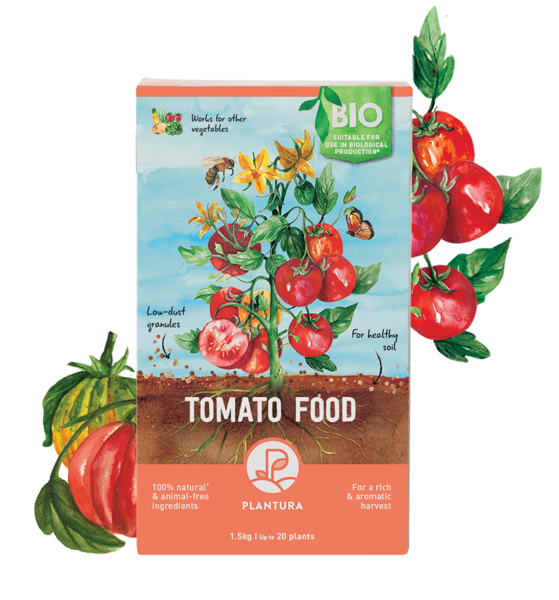
- Perfect for tomatoes, chillies, courgettes, cucumber & more
- For healthy plants & an abundant tomato harvest
- Long-lasting fertiliser that is free from animal products - child & pet friendly
Harvest and storage
Beetroot can be harvested from early sowings from the end of July until winter. For this purpose, a digging fork or a small shovel is suitable to slightly loosen the soil around the beets. You can then simply pull them out and lightly tap off any excess soil. However, a residue of soil should remain on the beets as this extends its shelf life. The root can easily be twisted off about three centimetres below the beets. The foliage remains on the beets.
Yellow beetroot can then be eaten fresh or stored. It can be stored in a soil pile or sand-filled box in the garden or cellar. The most suitable temperatures are from 0 to 1 ° C, because then the storage is possible throughout the winter. It is also possible to simply leave the yellow beets in the ground until use. Alternatively, it can be boiled down and thus preserved for a longer time.
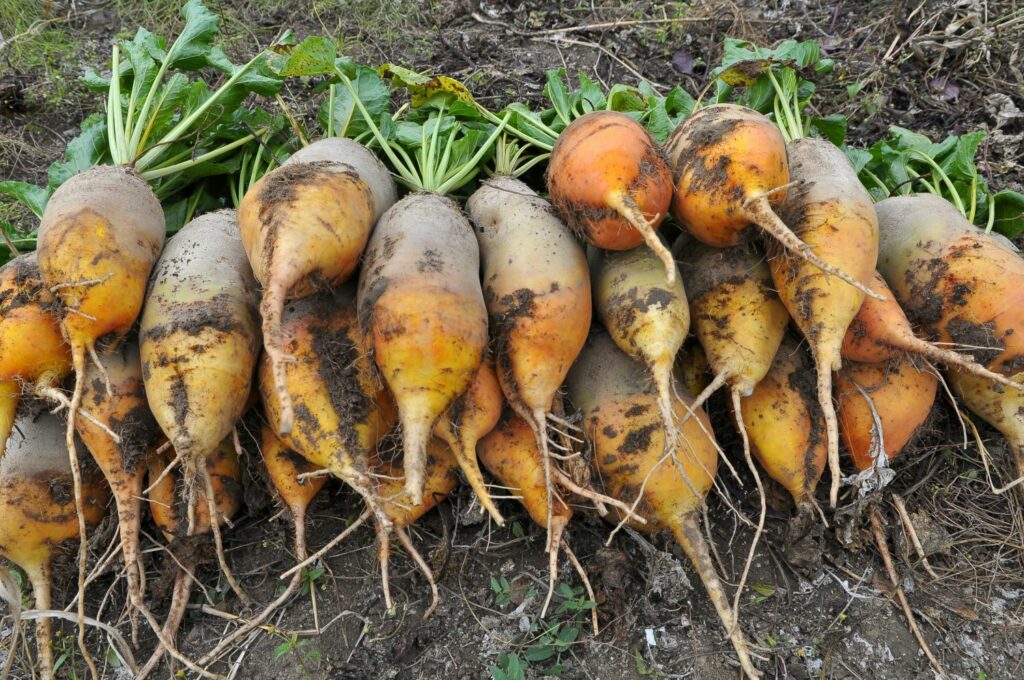
Taste and contents of yellow beetroot
The taste of yellow beetroot is intense and aromatic. It is very similar to that of regular beetroot, but slightly sweeter. The yellow colour is due to the pigment carotene.
Beets contains a lot of iron, potassium and vitamin B, and has a high folic acid content. These ingredients make yellow beetroot beneficial to health and support the liver and gall bladder. It is also said to have anti-inflammatory and mood-lifting effects.
Preparing yellow beetroot: raw and cooked
There are countless recipes for yellow beetroot – it can be prepared in the same way as red beets. It can be eaten raw or cooked and the leaves can be made into a delicious yellow beet salad. It is important not to pick all the leaves of one plant. Otherwise, the plant will have to put a lot of energy into new leaves instead of letting the beets grow.
The beetroot tastes particularly delicious raw as carpaccio, but you can also deep-fry it into chips, steam it, fry it or cook it. You can also drink the yellow beets, either as juice or in a smoothie. Red beet soup is a classic for a reason, but yellow beetroot is just as good here.
Still need the right seasoning for a delicious yellow beetroot soup? Read here all about cultivation and harvesting parsley.



















